Results 6,741 to 6,750 of 12094
Thread: Anandtech News
-
02-23-17, 07:05 AM #6741
Anandtech: Performance & Battery Life Report: Xiaomi Redmi Note 4 with MediaTek Helio
As a member of Xiaomi’s more affordable Redmi series, the Note 4 does not have a curved screen, a ceramic body, or the latest flagship hardware like Xiaomi’s more expensive models, but it does pack a 5.5-inch IPS LCD display, a rear-mounted fingerprint sensor, and a 13MP camera with PDAF into a solid-feeling aluminum chassis. This report is more concerned with its internal hardware, however, focusing on the Redmi Note 4’s system performance, gaming performance, and battery life.
More...
-
02-23-17, 08:51 AM #6742
Anandtech: Intel Launches Atom C3000 SoCs: Up to 16 Cores for NAS, Servers, Vehicles
Intel this week formally launched its Atom C3000-series processors (formerly codenamed Denverton). The new chips are designed for inexpensive storage servers, NAS applications, as well as autonomous vehicles. The C3000 series features up to 16 low power x86 cores, integrated 10 GbE, rather rich I/O capabilities, as well as Intel’s Quick Assist technology.
Intel’s Atom C3000 processors are based on Intel's current-generation Goldmont Atom microarchitecture, with SKUs offering between 2 and 16 cores and clockspeeds up to 2.2 GHz. Being designed for primarily for NAS and servers, the Atom C3000 SoCs fully support Intel’s VT-d hardware virtualization, Quick Assist compression/encryption technology (up to 20 Gbps throughput) as well as up to 64 GB of single-channel DDR4-1866 or DDR3L-1600 ECC memory. When it comes to I/O, the Atom C3000 features a PCIe 3.0 x16 controller (with x2, x4 and x8 bifurcation), 16 SATA 3.0 ports, four 10 GbE controllers, and four USB 3.0 ports.
Due to its rich I/O capabilities, the Atom C3000 is aimed at a wide range of devices, including servers/NAS (which they were originally designed for) as well as emerging applications like IoT and autonomous vehicles. For example, PCIe 3.0 bus may be used to connect various controllers, sensors and co-processors (e.g., a GPU) to the SoC. Last year we examined one of the server-oriented C3000-based designs that is going to be one of the many devices featuring the new chips.
Intel will offer various versions of its Atom C3000 SoCs with different TDPs starting at 8.5 W. The chips will support extended temperature ranges for storage, industrial and autonomous driving environments. In addition, Intel says that the processors feature “automotive-grade safety and security features,” but does not elaborate (generally, ECC, Quick Assist, virtualization, etc. can be considered as safety and security features too).
So far, Intel has only announced one Atom C3000-series SoC: the Atom C3338, which has two cores running at 1.5 – 2.2 GHz, 4 MB cache, 10 PCIe 3.0 lanes, 10 SATA 3.0 ports, four Gigabit Ethernet ports and so on. The chip has 9 W TDP and costs $27 in commercial quantities and is expected to be available to Intel’s customers already this quarter.
Intel’s partners have been testing the Atom C3000 processors since at least early 2016. The chipmaker expects its allies to start launching actual products based on the chips by mid-2017. In addition to the SoCs themselves, Intel will also supply a data plane development kit (DPDK) as well as a storage performance development kit (SPDK) to assist its partners in development of networking and storage applications.
Related Reading:
- Semi-Critical Intel Atom C2000 SoC Flaw Discovered, Hardware Fix Required
- Intel Announces Atom E3900 Series - Goldmont for the Internet of Things & More
- Intel Quietly Launches Apollo Lake SoC: Goldmont CPU, 6 SKUs, 6 & 10 Watts
- Spot The Denverton: Atom C3000 Silicon On Display
More...
-
02-23-17, 10:52 AM #6743
Anandtech: Toshiba Samples 64-Layer 512 Gb BiCS 3D NAND, Announces 1 TB BGA SSD
Toshiba on Wednesday said that it had begun to sample its latest BiCS 3D NAND flash memory chips with 64 word layers and 512 Gb capacity. A co-development project with Western Digital, the two companies intend to produce the new ICs (integrated circuits) in high volume sometimes in the second half of this year. Among the first products to use the new chips will be Toshiba’s BGA SSD with 1 TB capacity.
Looking at the specifications, Toshiba's 512 Gb (64 GB) 64-layer BiCS 3D NAND will be TLC-based, with the use of TLC being unsurprising here as all makers of non-volatile memory nowadays concentrate on TLC ICs for SSDs. Toshiba as well as its fab and development partner (Western Digital) has not formally revealed the interface speed of their new 512 Gb 3D NAND ICs nor the number of planes per IC, but these are details that the companies are probably going to share when they are ready to ship such devices in high volume (or simply decide to publish their ISSCC presentation from earlier this month).
In fact, a 64-layer 3D TLC BiCS NAND chips per se are not a 2017 breakthrough. Western Digital, has been using its 64-layer 3D TLC NAND devices for actual products (e.g., removable media) since November or December. However, those 64-layer 3D TLC NAND ICs have capacity of 256 Gb, whereas the new chips can store 512 Gb of data. Toshiba itself says that its 256 Gb 64-layer BiCS ICs are in high-volume production today.
Toshiba and Western Digital said that high-volume manufacturing of their 512 Gb 64-layer devices will commence in the second half of 2017 in Yokkaichi, Japan. The two companies said that the new ICs will help them to address various retail, mobile and data center applications. The latter indicates that the devices will be used not only for removable media and mobile storage, but also for high-end enterprise-class SSDs.
Meanwhile, Toshiba’s BGA SSDs will be among the first to use the company’s new memory devices. The company plans to produce a BGA drive (as well as M.2 modules based on such BGA devices) with 1 TB capacity featuring 16 chips. Such SSDs are designed for various mobile and UCFF (ultra-compact form-factor) PCs and enable to reduce their thickness and overall footprint as well as improve battery life. Samples of the BGA drives will be available in April, whereas mass production will start sometimes in 2H 2017.
Note: Images are for illustrative purposes only.
Related Reading:
- Toshiba Announces Plan to Sell Minority Stake In NAND Flash Production Business
- Micron 2017 Roadmap Detailed: 64-layer 3D NAND, GDDR6 Getting Closer, & CEO Retiring
- GALAX Shows Off Phison PS5008-E8 SSD with 3D NAND
More...
-
02-23-17, 01:12 PM #6744
Anandtech: Samsung Announces Exynos 8895 SoC: 10nm, Mali G71MP20, & LPDDR4x
Even though Mobile World Congress doesn’t kick off for another few days, Samsung isn’t wasting any time in getting started. This morning the company is announcing their latest generation high-end ARM SoC, the Exynos 8895. Their first in-house 10nm SoC, the company isn’t talking about what it will go in, but based on the context of the announcement it’s a safe bet we’re looking at the SoC for at least some SKUs of the next Galaxy S phone.
While Samsung has been in the SoC game with the Exynos series for a number of years now, it’s been in the last few years that they’ve really cemented their positon as a market leader at the high-end. Thanks in part to the company’s 14nm process, the Exynos 7420 proved to be a very capable and powerful SoC from the company. Last year Samsung followed that up with the Exynos 8890, which among other firsts marked Samsung’s entry into designing their own CPU cores with the M1.
Now for 2017 Samsung wants to repeat their success over the past couple of years with the Exynos 9 Series 8895. As you can likely infer from the name, it’s not meant to be radically different from the preceding 8890, but there are still some pretty important changes here that should affect performance across the board.
The big deal for Samsung of course is that the Exynos 8895 is their first 10nm SoC, designed by Samsung LSI and fabbed by Samsung. Semantics of what is or isn’t 10nm aside, Samsung’s 10nm LPE process is cutting-edge for a mobile SoC, and relative to the current 14nm process offers better density and better performance characteristics. Samsung has talked about the process a bit in the past, and for the Exynos 8895 announcement they are reiterating that the 10nm LPE process offers “up to 27% higher performance while consuming 40% less power” relative to 14nm. Though for the 8895 in particular, Samsung isn’t talking about performance quite yet.Samsung Exynos SoCs Specifications SoC Exynos 8895 Exynos 8890 Exynos 7420 CPU 4x A53
4x Exynos M2(?)4x A53@1.6GHz
4x Exynos M1 @ 2.3GHz4x A53@1.5GHz
4x A57@2.1GHzGPU Mali G71MP20 Mali T880MP12
@ 650MHzMali T760MP8
@ 770MHzMemory
Controller2x 32-bit(?)
LPDDR4x2x 32-bit
LPDDR4 @ 1794MHz
28.7GB/s b/w2x 32-bit
LPDDR4 @ 1555MHz
24.8GB/s b/wStorage eMMC 5.1, UFS 2.0 eMMC 5.1, UFS 2.0 eMMC 5.1, UFS 2.0 Modem Down: LTE Cat16
Up: LTE Cat13Down: LTE Cat12
Up: LTE Cat13N/A ISP Rear: 28MP
Front: 28MPRear: 24MP
Front: 13MPRear: 16MP
Front: 5MPMfc.
ProcessSamsung
10nm LPESamsung
14nm LPPSamsung
14nm LPE
Diving into the specs, the CPU situation looks a great deal like the previous 8890. Samsung has gone with 8 cores – 4 high-power, 4 low-power – with a mix of custom and licensed silicon. The high-power cores are composed of what Samsung is calling a “2nd generation” custom CPU core. This would presumably be a newer iteration of the M1 (so the M2?), but Samsung isn’t offering up much in the way of details at this time over what’s changed from the M1. What we do know is that Samsung is touting that it offers both better performance and improved energy efficiency. Meanwhile low-power work is once again being provided by ARM’s Cortex-A53. (ed: which on 10nm, must be absolutely tiny, considering that a core was sub-1mm2 on 14nm)
Meanwhile on the GPU side, Samsung has significantly upgraded their graphics capabilities by tapping ARM’s latest-generation Mali-G71 GPU in an MP20 configuration. Based on ARM’s new Bifrost GPU architecture, the G71 radically overhauls the internal workings of the GPU to match the contemporary thread level parallelism (TLP)-centric nature of desktop GPUs and modern workloads. ARM has previously discussed that they expect G71-based devices to offer around 50% better graphics performance than T880 devices, and Samsung is going one step further by touting it as 60% faster performance.
In another first for Samsung, the 8895 is also their first Heterogeneous System Architecture (HSA) compliant SoC. This requires that the CPU, GPU, and interconnect all support HSA, and indeed all of the necessary pieces have come together for 8895. We’ve previously seen that the Mali-G71 GPU is HSA-compliant, and meanwhile for the 8895 Samsung has rolled out a new version of their interconnect (the Samsung Coherent Interconnect) to support HSA. This isn’t a development that I expect will have immediate ramifications, but HSA is ultimately at the core of making it easier for developers to program applications that use the GPU in a compute context, thanks to the common (and common-sense) architecture rules for HSA.
To feed the resulting beast, Samsung has added support for LPDDR4x memory. An extension of the original LPDDR4 standard, LPDDR4x is designed to reduce DRAM power consumption by up to 20% by reducing the output driver power (I/O VDDQ voltage) by 45%, from 1.1 V to 0.6 V. LPDDR4x memory has just started shipping, so along with the previously announced Snapdragon 835, the Exynos 8895 is the other high-performance SoC coming out this year to support the new memory.
The Exynos 8895 is also getting an upgraded ISP. The latest ISP supports 28MP for both the front and rear cameras, while a bit more nebulously, Samsung’s spec sheet also lists support for “28MP+16MP Dual Camera” mode, an unsurprising development given the recent popularity of dual camera phone designs. Diving a bit deeper, we find that the 8895’s ISP is actually two ISPs: a high-performance ISP and a low-power ISP, with the low-power ISP presumably providing the aforementioned 16MP capability. Samsung is touting this combination as allowing them to offer dual camera functionality while still keeping power consumption in check.
On the flip slide of the coin, the Exynos 8850 also gets a new version of Samsung’s video decode block, which the company calls their Multi-Format Codec (MFC). This latest MFC supports all the bells and whistles you’d expect, with both HEVC and VP9 decoding up to 4kP120. Samsung’s press release also briefly mentions a “video processing technology that enables a higher quality experience by enhancing the image quality” that’s capable of “enhancing the image quality of a specific portion that is perceived more sensitive to the human eye.” Given the VR applications – and Samsung wants to be able to do 4K VR – this sounds a bit like a variation on the idea of foveated rendering, but there aren’t any further details on the technology at this time.
Also appearing for the first time on the Exynos 8895 is Samsung’s Cat16 LTE modem design. With their modem Samsung is using 5x Carrier Aggregation to achieve up to 1Gbps down, while uploading is rated at LTE Cat 13, using 2 carriers to get 150Mbps up. What’s notable here is that, as best as I can tell, this is the first modem using 5x CA; Qualcomm’s equivalent modem, the X16, uses 3 or 4x CA depending on the scenario. Unfortunately with the limited details Samsung offers right now, I’m not sure whether they have to use 5x CA to get Cat 16 bandwidth, or this is just another optional mode.
Finally, the Exynos 8895 also includes what Samsung is calling an “enhanced security sub-system with a separate security processing unit” for use with user authentication, mobile payments, and the like. Based on Samsung’s description this sounds a heck of a lot like Apple’s Secure Enclave, which would be a very welcome development, as in Apple’s case it has made their phones a lot harder to break into.
Wrapping things up, along with today’s product announcement of the Exynos 8895, Samsung is also announcing that the SoC is in mass production; and indeed I would be surprised if this isn’t the SoC they announced back in October, which would mean it’s been in production for some time now. We still don’t know when we’re going to see the next Samsung Galaxy S phone, but given how Samsung is announcing the SoC in this fashion, clearly it’s going to be sooner than later. In the meantime, hopefully we’ll get some additional SoC details next week at MWC.
More...
-
02-23-17, 03:34 PM #6745
Anandtech: AOC Expands AGON Family with Curved AG322QCX and AG272FCX 144 Hz Displays
AOC has introduced two new curved gaming monitors as part of the AGON family, the AG322QCX and the AG272FCX. The new monitors feature rather high refresh rates along with VESA’s Adaptive-Sync technology (which generally means support for AMD’s FreeSync). The displays have a number of similarities, but are aimed at different segments of the market, with varying prices and feature sets..
The AOC AGON AG272FCX is the smaller of the two and uses a 27” VA panel with 1920×1080 resolution, whereas the AOC AGON AG322QCX is the larger one and features a 31.5” VA panel with 2560×1440 resolution. The monitors have 1800R curvature, a 16:9 aspect ratio, as well as refresh rates between 48 Hz and 144 Hz. The general specifications of the displays resembles those of many other gaming monitors: 250/300 nits brightness, 3000:1/2000:1 contrast ratio, 178°/178° viewing angles, 16.7 million colors (and the sRGB color gamut), a 4 ms response time (grey-to-grey) and so on. The monitors support VESA’s Adaptive-Sync technology, and I expect it's only a matter of time until AMD certifies them for FreeSync.
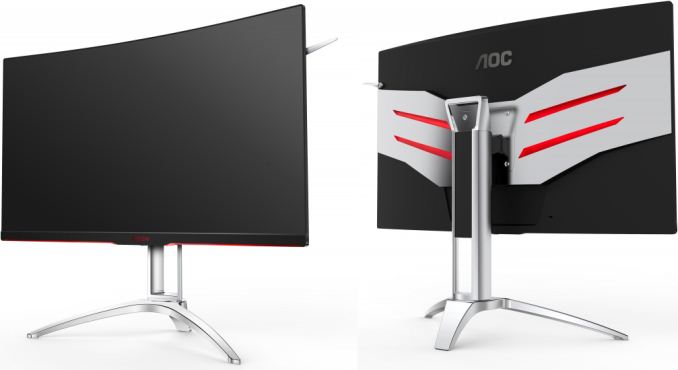
As for connectivity, the AGON AG272FCX has a D-Sub(!), DisplayPort, and two HDMI inputs, whereas the AGON AG322QCX comes with two HDMI and two DisplayPort inputs. The smaller display also has a dual-port USB 3.0 hub as well as integrated 3 W stereo speakers, two logical features for an entry-level monitor. By contrast, the larger screen is a much more straightforward pure monitor, which is par for the course as higher-end monitors rarely ship with speakers since customers usually already have external speakers/headphones. A more important drawback is the lack of any HDCP support on the AG322QCX, which greatly limits the monitor's ability to be used with protected HD video content such as Blu-rays or Netflix streaming.
When it comes to visual aesthetics, the new AGON displays feature ultra-thin bezels as well as an aggressive design that highlights their gaming nature. Furthermore, the monitors have four large LEDs with adjustable colors (red, green, blue) located on the back and two located on the bottom edges of the displays.AOC's AGON Curved 16:9 Displays AGON AG272FCX AGON AG322QCX Panel 27" VA 31.5" VA Native Resolution 1920 × 1080 2560 × 1440 Maximum Refresh Rate 144 Hz Response Time 4 ms Dynamic Refresh Rate Adaptive-Sync (not yet FreeSync certified) Brightness 250 cd/m² 300 cd/m² Contrast 3000:1 2000:1 Viewing Angles 178°/178° horizontal/vertical Curvature 1800R Pixel Pitch 0.3114 mm 0.2724 mm Pixel Density 82 ppi 93 ppi Anti-Glare Coating Yes Inputs 1 × DisplayPort (HDCP)
1 × D-Sub
2 × HDMI (HDCP)2× DisplayPort
2 × HDMIUSB Hub 2-port USB 3.0 hub - Audio 3 W × 2
audio in/out ports- Power Consumption Idle: 0.5 W
Operating: 47 WIdle: 0.5 W
Operating: 40 WLaunch Price £389 ($485) in the U.K. £519 ($647) in the U.K.
The addition of these latest AGON displays brings AOC to a total of four curved monitors introduced under the brand in the last few months, joining the company's previously launched ultrawide curved monitors and making these the company's first curved 16:9 monitors. So it appears that AOC is pinning a lot of its hopes for the AGON brand on curved gaming screens with high refresh rates designed for gamers.
AOC’s AGON AG322QCX and AGON AG272FCX monitors will be available in May. The exact MSRPs of the displays in the U.S. and Continental Europe are unknown, but Hexus reports that in the U.K. they will cost £519 ($647) and £389 ($485) respectively.
Gallery: AOC AGON AG322QCX





Related Reading:
- AOC Announces the AGON AG352UCG 21:9 Curved Display: 35", 3440×1440, 100Hz with G-Sync
- AOC Launches the AG352QCX: 35-Inch 200 Hz 2560×1080 Curved Display with Adaptive-Sync
- The AOC Q2781PS Announced: 'Frameless' Rose Gold 27" QHD with Swarovski Crystals
- AOC P2779VC: 27” PLS Display with Qi Wireless Charging Base for $199
More...
-
02-23-17, 04:30 PM #6746
Anandtech: SilverStone Launches SST-TP01-M.2 Thermal Pads for M.2 SSDs
In a bit of offbeat news this afternoon, SilverStone has announced a set of thermal pads for M.2 SSDs, the SST-TP01-M.2. These pads are designed to eliminate (or at least reduce) throttling of modern, high-performance drives under high loads. The pads are made of silicone and Silverstone claims they can reduce temperature of SSDs by over 10°C.
M.2 SSDs have a number of advantages over drives in traditional 2.5” form-factor: they are smaller, they are faster (because they use the PCIe interface with the NVMe protocol), they are (sometimes) cheaper to make, and so on. However, one of the main drawbacks of higher-end M.2 SSDs is the high heat dissipation of their controllers (and memory chips) despite their small form factor, which can lead to thermal throttling and reduced overall performance. Manufacturers have been aware of this for a bit now and have been addressing it in a couple of different ways. Plextor, for example, installs aluminum heat spreaders on their M8Pe drives, whereas Samsung’s latest HDDs come with other types of heat spreaders. However since not all SSD suppliers equip their products with sufficient cooling, SilverStone has developed an aftermarket thermal pad that should work with most drives.
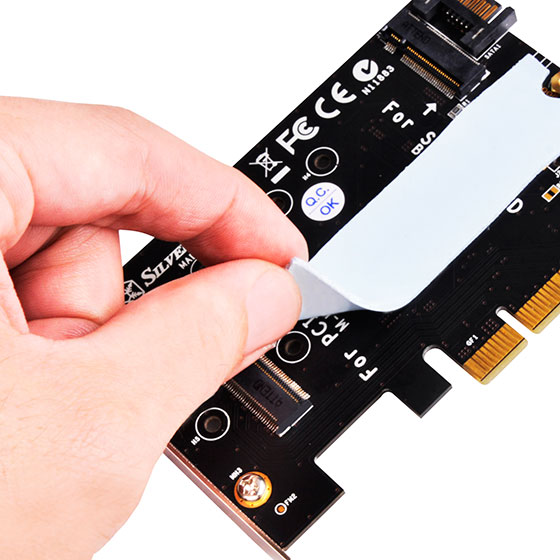
The SilverStone SST-TP01-M.2 thermal pads are made of electrically non-conductive silicone – a material that offers decent thermal conductivity (up to 4 W/m.k) – and can fit M.2 drives that are up to 110 mm long. The SST-TP01-M.2 package includes both 0.5 mm and 1.5 mm thick pads for accommodating different setups.
According to SilverStone, usage of the thermal pads can reduce temperature of Samsung’s SM951 SSDs from 86°C to 71.4°C under high loads, thus ensuring they operate at peak performance more often. The actual performance of SilverSone’s thermal pads will heavily depend on the SSD and the surrounding system – the heat still needs to go somewhere – but there's some potential here as silicone heatpads are by no means a new thing in PC hardware and have proven themselves to be useful.

SilverStone has already started to produce its M.2 thermal pads, and in Japan stores in the famous Akihabara district are already demonstrating them. Unfortunately, pricing has not yet been announced. But M.2 SSD owners who suffer from thermal throttling of M.2 SSDs will want to keep an eye on this.
More...
-
02-24-17, 07:30 AM #6747
Anandtech: The OpenPOWER Saga Continues: Can You Get POWER Inside 1U?
When we saw that Tyan made a 1U server based upon this Habanero platform, that caught our eye. The power-hungry POWER8 inside a density optimized form factor? And they feed it with a PSU of "only" 750 W? Is that really a viable option?
Today we'll be taking a loot at Tyan's GT75 system to find out the answer to that, and to see if a 1U configuration makes sense for a POWER8 system.
More...
-
02-24-17, 09:58 AM #6748
Anandtech: ASUS Designo Curve MX34VQ Incoming: 34" Ultrawide Curved Display with Qi C
ASUS has started to ship its Designo Curve MX34VQ display that was originally announced in mid-2016. At present, a number of retailers are offering pre-orders on the monitor, starting that it is “coming soon." The monitor is based around a UWQHD-class panel and is equipped with a wireless Qi charging device as well as an audio sub-system co-developed with Harman Kardon. In addition, the display has a 100 Hz refresh rate, a feature that should appeal to gamers.
The ASUS Designo Curve MX34VQ has a number of similarities with another ultrawide curved display with a Qi charger, the MX38VQ, which was introduced earlier this year. The two monitors share many design elements, such as ultra-thin bezels, a Harman Kardon-developed audio sub-system consisting of two 8 W speakers, a curved stand made of metal and plastic, and a Qi charger with acrylic elements and blue lighting. Where the two displays differ is in their panels, curvature and other specifications.
The ASUS Designo Curve MX34VQ is based on a 34” VA panel with a 3440×1440 resolution (2.39:1 aspect ratio), offering a maximum brightness of 300 nits, a 3000:1 contrast ratio, a 100 Hz refresh rate, 178°/178° viewing angles, a 4 ms response time, and 1800R curvature. The panel can reproduce 16.7 million colors and appears to be a pretty typical sRGB gamut design. As for connectivity, the Designo Curve MX34VQ monitor has three HDMI 2.0 ports, a DisplayPort 1.2 port (PiP and PBP functions are supported), and a 3.5-mm audio jack.
The ASUS Designo Curve MX34VQ can be pre-ordered from Amazon and B&H for $799, which seems to be its official price. If that does end up being the official price then it'll be a bit lower than I had initially expected, given the stylish design and rather decent specifications. For comparison, similar curved ultrawide monitors without Qi support have tended to retail for $899 and higher. In any case, the exact availability date is unknown, but with pre-orders opening up it's reasonable to assume that the MX34VQ will finally hit the shelves in the coming weeks.ASUS Designo Curve MX34VQ Panel 34" VA Resolution 3440 × 1440 Refresh Rate 100 Hz Response Time 4 ms gray-to-gray Brightness 300 cd/m² Contrast 3000:1 Viewing Angles 178°/178° horizontal/vertical Color Saturation 16.7 million colors (sRGB?) Pixel Pitch 0.2316 mm Pixel Density 110 ppi Inputs 1 x DisplayPort 1.2 (HDCP)
3 x HDMI 2.0 (HDCP)Qi Wireless Charging 5W/1A with aurora lighting Audio 8 W × 2
Harmon/KardonLaunch Price $799 (?)
Buy ASUS MX34VQ on Amazon.com

Gallery: ASUS Designo Curve MX34VQ





Related Reading:
- ASUS Announces Designo Curve MX38VQ: 37.5 Inch Curved Display with Qi Charging
- Acer Launches Curved XR382CQK Display: 37.5-inch, 3840×1600, FreeSync, & USB-C
- NEC Goes for a Curved Display, Launches 3440×1440 MultiSync EX341R Monitors
- ASUS Demonstrates ROG Swift PG27UQ: 4K, 144 Hz, HDR, DCI-P3 and G-Sync
More...
-
02-24-17, 01:14 PM #6749
Anandtech: Sony Announces SF-G UHS-II SD Cards: Up to Nearly 300 MB/s Read/Write Perf
Sony has announced its new lineup of SD cards for advanced 4K/8K, DSLR, and mirrorless cameras. The new SF-G-series memory cards use the UHS-II bus and one of Sony’s proprietary technologies to offer the company's highest read/write performance to date — up to nearly 300 MB/s. The cards will hit the market in the coming months.
The Sony SF-G-series memory cards will be available in 32 GB (SDHC), 64 GB (SDXC), and 128 GB (SDXC) configurations. The key selling point of the new Sony SF-G cards is their performance: up to 300 MB/s read speed and up to 299 MB/s write speed, which a quick look finds is around 15% faster compared to competing products (such as the SanDisk Extreme PRO SD UHS-II or the Lexar Professional 2000x UHS-II, both of which offer up to 260 MB/s writes). The new cards from Sony are compatible with various types of SD-supporting devices (cameras, card readers, etc.), but to take full advantage of their speed one needs a device that fully supports the UHS-II bus and has the extra pins the wider bus requires.
Sony is not reveaing how they're getting up to 299 MB/s sequential write performance in an SD card, instead only saying that it is enabled by its firmware. One possibility is that the cards use NAND flash memory with very large block sizes (supported by the SD 5.0 standard), which helps to boost write performance. In addition, the NAND controller inside the card may have a special pSLC cache with very fast writes and rather low usable capacities of the devices imply on that, but this could be verified only by testing one of these products.
The new cards from Sony carry the Class 10 and U3 labels to show that their performance does not drop below 10 and 30 MB/s when used with those standards' respective workloads. Being positioned for professional use, the Sony SF-G cards are also waterproof, static-proof, temperature-proof, and shock-proof, which is beneficial for people who travel a lot and/or have to use memory cards in tough conditions. In case the data on cards is lost, Sony supplies its File Rescue tool with them.Sony UHS-II SD Cards at Glance 32 GB
SF-G3264 GB
SF-G64128 GB
SF-G128Usable Capacity 28.8 GB 57.6 GB 115.2 GB Read Speed up to 300 MB/s Write Speed up to 299 MB/s Minimum Sequential Write Speed 30 MB/s Interface UHS-II Availability Spring 2017 SDA Labels UHS-II, Class 10, U3
Sony’s SF-G-series SDXC cards will be available this spring. Pricing is to be determined, but it will vary depending on capacities. In addition to the flash memory cards, Sony will also offer its clients a UHS-II-capable MRW-S1 card reader with USB 3.0 interface, whose price is also unknown.
Related Reading:
- Edge Memory Announces Video Speed Class SD Cards
- The SD Card Association to Classify IOPS Performance of Memory Cards via Logo
- SD Association Announces SD 5.0 Specification: SD Cards For UHD and 360° Video Capture
- Western Digital Shows Off Prototype 1TB SDXC Card at Photokina 2016
- Samsung Rolls Out Its First UFS Cards: SSD Performance in Card Form-Factor
More...
-
02-25-17, 12:11 PM #6750
Anandtech: XFX Starts to Sell Single-Slot Mini-ITX Radeon RX 460 Slim Graphics Cards
XFX has quietly started to sell its slim Radeon RX 460 video cards, which use a single-slot cooling system and can fit into a Mini-ITX computer. The cards features 2 or 4 GB of memory depend on SKU, as well as three display connectors, making them suitable for SFF and HTPC builds. Pricing of the cards is in line with AMD’s recommendations at around $140.
The XFX Radeon RX 460 Slim Single Slot Design lineup consists of two graphics adapters carrying 2 or 4 GB of GDDR5 memory (operating at up 7 GT/s). Both video cards are powered by a cut-down version of AMD’s Polaris 11 GPU (896 stream processors) and are clocked at up to 1220 MHz. The GPU is cooled by a relatively large cooling system featuring an aluminum heatsink with an 80- or a 90-mm fan at its center. When it comes to connectivity, the cards have one DL-DVI-D port, one DisplayPort 1.4, and one HDMI 2.0b port.
The AMD Polaris 11 GPU supports a contemporary feature-set via the DirectX 12 and Vulkan APIs. What's more, the graphics chip features hardware-accelerated decoding and encoding of HEVC (H.265) and VP9 video at 4Kp60, as well as HDR10 video output and HDCP 2.2 — all important capabilities for HTPCs. Last, but not least, performance of the GPU in graphics applications is considerably higher compared to most of today’s iGPUs and thus the new boards can be used to upgrade various OEM PCs.
The key selling points of the XFX Radeon RX 460 Slim Single Slot Design graphics cards are their short length and uncommon single-slot width. The cards are just 170 mm long and thus are fully compatible with Mini-ITX builds. In addition, they can fit into densely packed systems that do not have a lot of spare space inside for a more traditional double-wide card. Furthermore the cards as sub-75W, and consequently do not require any auxiliary power connectors, which means they can be used to upgrade PCs whose PSUs don't offer those connectors.
The XFX Radeon RX 460 Slim Single Slot Design graphics cards with 4 GB of GDDR4 memory are already available from Amazon and Newegg for $167.99 and $139.99 (this is AMD’s MSRP for the RX 460 4 GB), respectively. The 2 GB version of the card is missing from retail, but it should hit the market eventually.XFX Radeon RX 460 Slim Single Slot Design Graphics Cards RX-460P4TFG5 RX-460P2TFG5 GPU AMD Polaris 11 (Baffin) Stream Processors 896 Texture Units 56 ROPs 16 Core Clock (MHz) 1090 Boost Clock (MHz) 1220 Memory Capacity 4 GB 2 GB Type GDDR5 Clock 7 Gbps Bus Width 128 bit Outputs DisplayPort 1 × DisplayPort 1.4 DVI 1 × DVI-D HDMI 1 × HDMI 2.0b TFLOPS (FP32) Up to 1.95 TDP 75 W Launch Date 2/2017 unknown Additional Information Link Link
Gallery: XFX Starts to Sell Single-Slot Mini-ITX Radeon RX 460 Slim Graphics Cards

One of the images in the gallery courtesy of Newegg.
Related Reading:
- ELSA Launches a Single-Slot GeForce GTX 1050 Ti 4 GB SP
- GALAX Shows Off Single-Slot GeForce GTX 1070 Graphics Card
- MSI Adds Low-Profile AMD Radeon RX 460 Graphics Cards to Lineup
More...
Thread Information
Users Browsing this Thread
There are currently 19 users browsing this thread. (0 members and 19 guests)





 Quote
Quote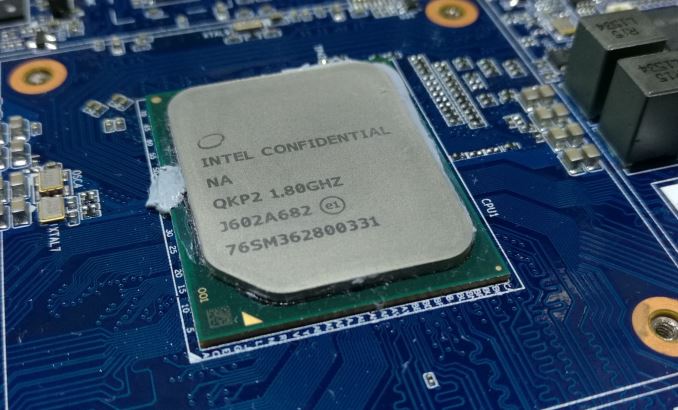
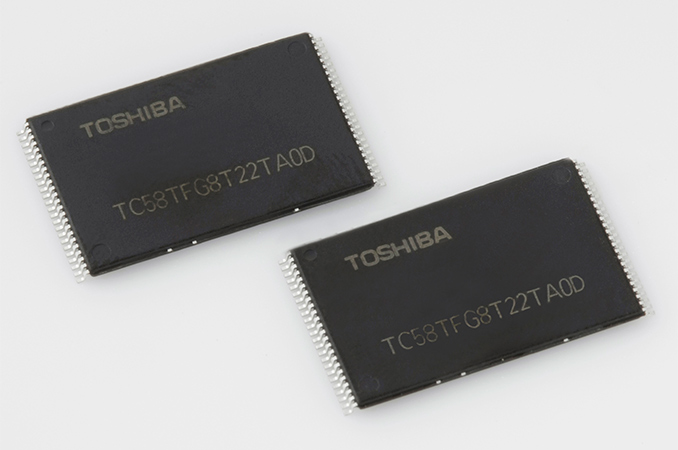
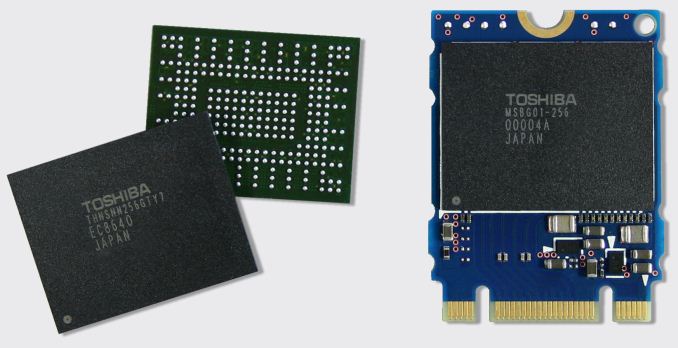

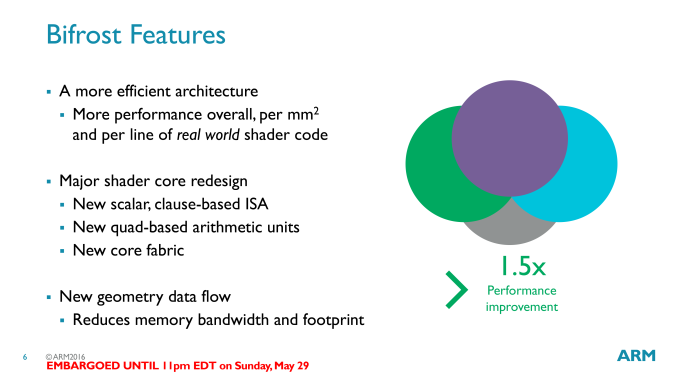
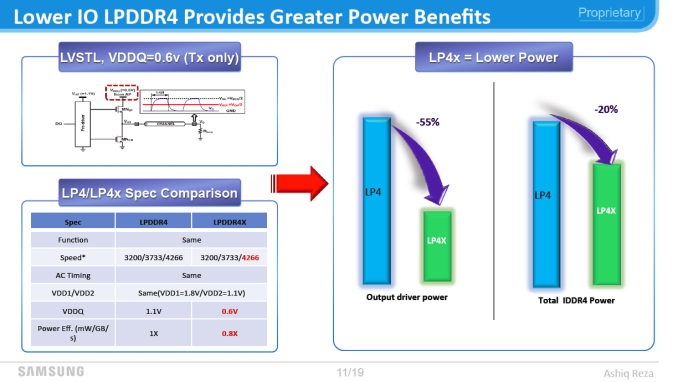
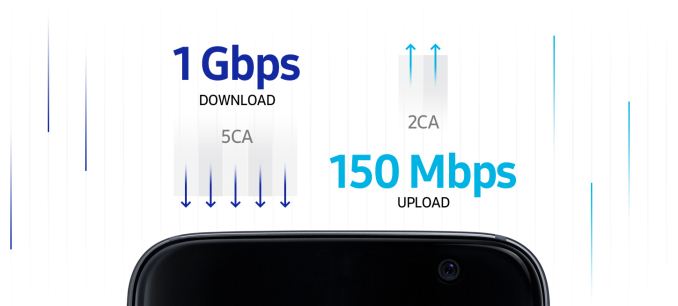
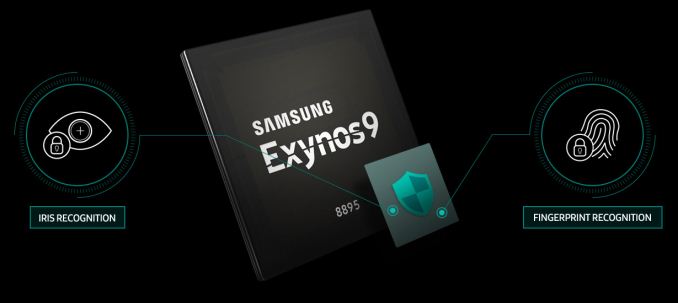
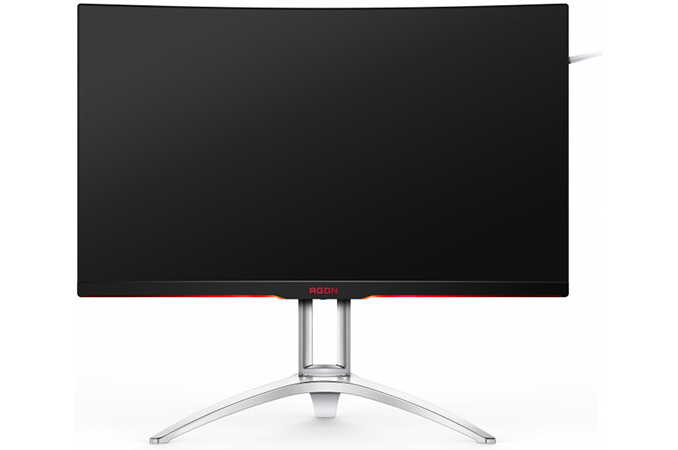

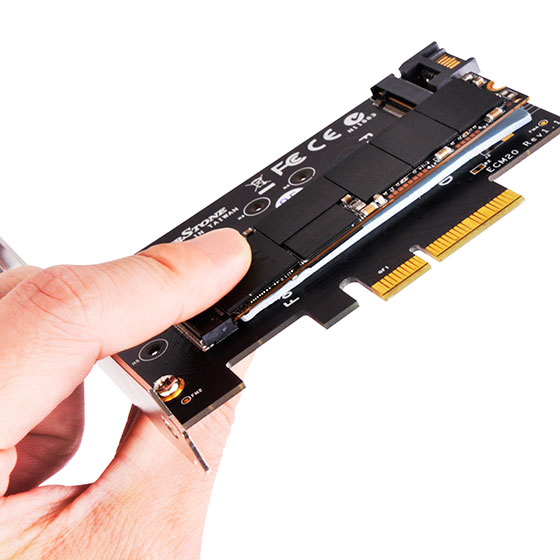
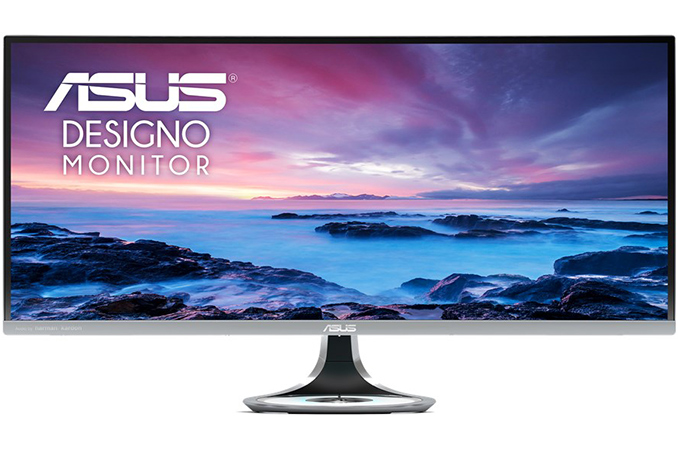
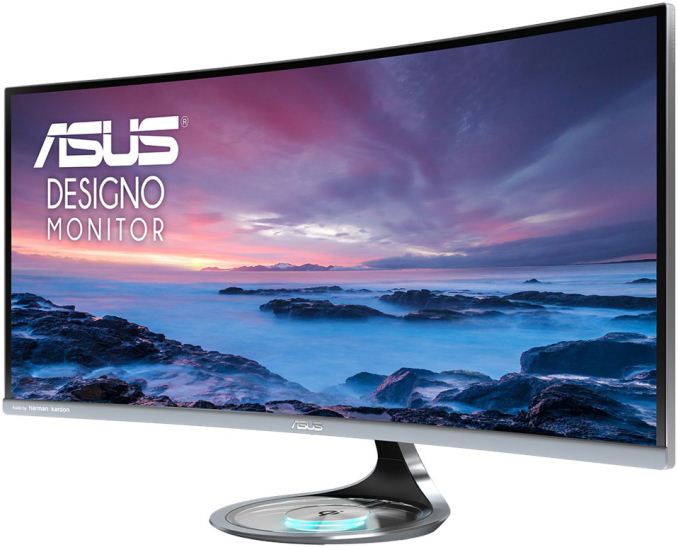
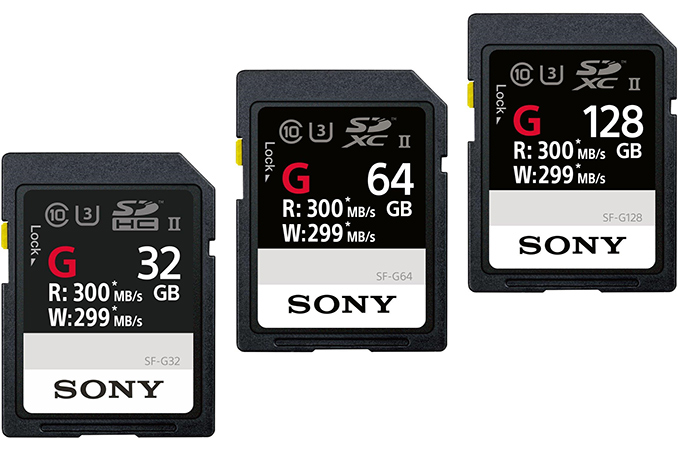

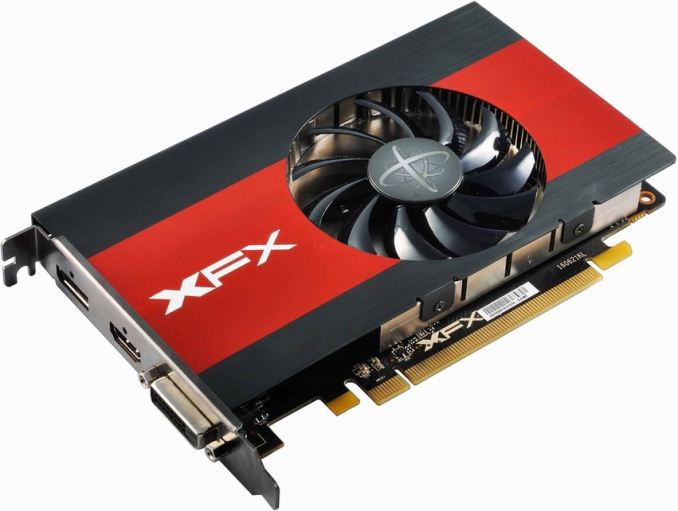



















Bookmarks